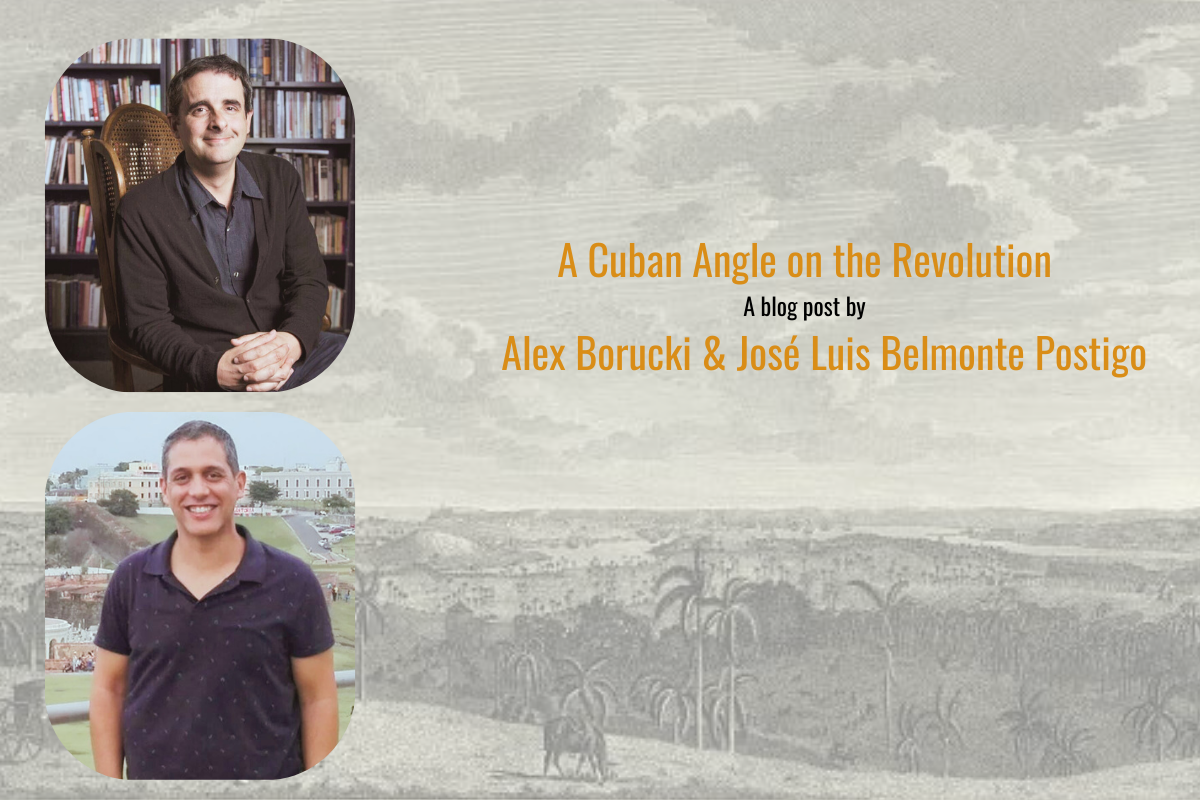
A Cuban Angle on the Revolution
By Alex Borucki (University of California, Irvine) and José Luis Belmonte Postigo (Universidad de Sevilla)
The authors’ article, “The Impact of the American Revolutionary War on the Slave Trade to Cuba” was published in the July 2023 William and Mary Quarterly. You can read the abstract here.
How does the essay relate to your larger project and/or more general scholarly interests?
This article comes from past and ongoing collaborative research on different but connected fronts. First, we (Belmonte and Borucki) knew each other as scholars of the history of Africans and their descendants in various colonial and nineteenth-century Latin American regions. Belmonte obtained the primary source material for this article when we were looking to expand the database of slave voyages within the Caribbean on the SlaveVoyages website. From this context, we thought about writing an article about these new sources on the arrival of enslaved Africans to Havana during the American Revolutionary War because this was genuinely new (It’s not yet in the database). This is the first time we have seen such sources for Cuba during the U.S. War of Independence. In addition, we were thinking (and still considering) writing a book about the slave trade to the Spanish Americas during the Age of Revolutions. Thus, this article tested how to conduct collaborative research and write together for our more extensive project.
Our book, tentatively titled “The Slave Trade and Silver in the Refinancing of colonial rule in the Spanish Americas, 1780-1810,” examines the increasing centrality of the traffic of captives for the colonial economies of Cuba, Venezuela, New Granada (Colombia, Panama, and Ecuador), and the Río de la Plata region (Argentina and Uruguay) in the three decades between the American Revolutionary War and the collapse of the Spanish Empire in the Western Hemisphere. We focus on the actions of merchants living in the colonies as the main drivers increasing this traffic. Apart from examining the strategies of slave traders living in ports historically central to the arrival of captives, such as Havana, we also study regions usually considered peripherical for studying slavery, such as Venezuela and the Río de la Plata. For Spanish colonial merchants, the slave trade was vital because it allowed the legalization of informal aspects of their economic activities, particularly the exports of silver. By engaging in the slave trade, these merchants could export silver outside of the Spanish Atlantic, for instance, through U.S. shippers, and in the process, “laundering” the silver they obtained in the internal markets of Spanish America. While conducting this traffic, colonial merchants also generated revenue for the Spanish treasuries in Havana, Caracas, and Buenos Aires, which helped finance colonial rule during the era of the Atlantic Wars leading to the Spanish Empire’s demise in the mainland Americas.
WMQ articles are capped at 10,000 words (plus notes). If you had 5,000 more words to play with, how would the article be different?
The article emphasizes the partnership of U.S. merchants with those on the Danish island of Saint Thomas and, of course, with the Spanish commercial community in Havana, as these merchant networks shaped this horrific traffic during the war. We had to narrow the article geographically and thematically to comply with this focus. Thus, we had to cut significantly the role played by Saint Domingue, particularly Cap Français (today’s Cap Haïtien). This port was the base of the Spanish and French combined forces intending to invade Jamaica during the American Revolutionary War, but this attack never materialized. After Charlotte Amalie in Saint Thomas, Cap Français was the other main port for reshipping captives to Havana during the war and thus offered a window into how slave trade routes and their agents (e.g., colonial merchants and European commercial houses) overlapped in the French and the Spanish Atlantic. While we explored how military operations such as the Spanish takeover of Nassau led to slave trading, as merchants and mariners from Charleston participated in the operations in the Bahamas and the traffic to Havana, we had to cut the connections between naval activities, privateers, and slave trading in Cap Français.
We mostly avoided the term “American” in the article, except when referring to the “American Revolutionary War,” because many of those living in Cuba, Venezuela, and Buenos Aires also called themselves “americanos.” They were Spanish Americans, españoles americanos. With that in mind, we should note that it is hard to write about the actions of U.S. people outside of the United States to U.S. audiences, in English, without portraying their activities as central to the narrative’s development or as the article’s driving force. In other words, while we portrayed the actions of the Spanish American merchants in Havana as central to this article, we cut a good amount of background, analysis, and explanations about their strategies. There’s a lot more on how their interests overlapped (or not) with the representatives of the Spanish colonial rule in Havana and how they connected the traffic of captives with the exchanges of merchandise during the war, with silver as the lubricant of all these exchanges.

Leave a Reply